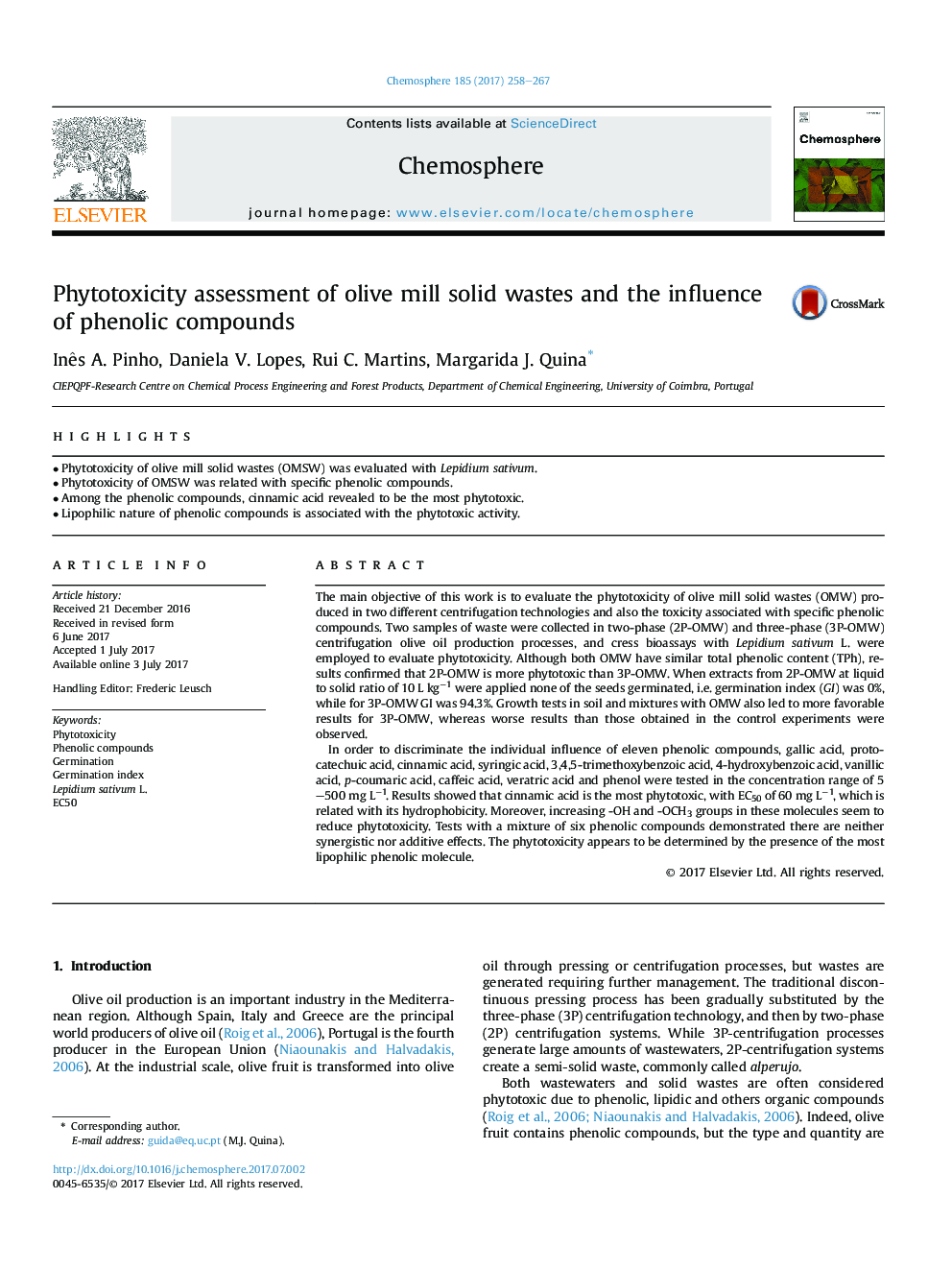| کد مقاله | کد نشریه | سال انتشار | مقاله انگلیسی | نسخه تمام متن |
|---|---|---|---|---|
| 5746741 | 1618786 | 2017 | 10 صفحه PDF | دانلود رایگان |
- Phytotoxicity of olive mill solid wastes (OMSW) was evaluated with Lepidium sativum.
- Phytotoxicity of OMSW was related with specific phenolic compounds.
- Among the phenolic compounds, cinnamic acid revealed to be the most phytotoxic.
- Lipophilic nature of phenolic compounds is associated with the phytotoxic activity.
The main objective of this work is to evaluate the phytotoxicity of olive mill solid wastes (OMW) produced in two different centrifugation technologies and also the toxicity associated with specific phenolic compounds. Two samples of waste were collected in two-phase (2P-OMW) and three-phase (3P-OMW) centrifugation olive oil production processes, and cress bioassays with Lepidium sativum L. were employed to evaluate phytotoxicity. Although both OMW have similar total phenolic content (TPh), results confirmed that 2P-OMW is more phytotoxic than 3P-OMW. When extracts from 2P-OMW at liquid to solid ratio of 10 L kgâ1 were applied none of the seeds germinated, i.e. germination index (GI) was 0%, while for 3P-OMW GI was 94.3%. Growth tests in soil and mixtures with OMW also led to more favorable results for 3P-OMW, whereas worse results than those obtained in the control experiments were observed.In order to discriminate the individual influence of eleven phenolic compounds, gallic acid, protocatechuic acid, cinnamic acid, syringic acid, 3,4,5-trimethoxybenzoic acid, 4-hydroxybenzoic acid, vanillic acid, p-coumaric acid, caffeic acid, veratric acid and phenol were tested in the concentration range of 5-500 mg Lâ1. Results showed that cinnamic acid is the most phytotoxic, with EC50 of 60 mg Lâ1, which is related with its hydrophobicity. Moreover, increasing -OH and -OCH3 groups in these molecules seem to reduce phytotoxicity. Tests with a mixture of six phenolic compounds demonstrated there are neither synergistic nor additive effects. The phytotoxicity appears to be determined by the presence of the most lipophilic phenolic molecule.
Journal: Chemosphere - Volume 185, October 2017, Pages 258-267
